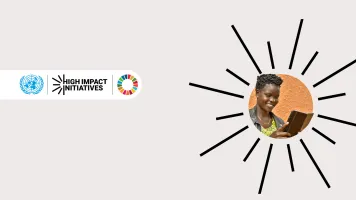One trillion dollars. That’s the amount that needs to flow from North to South each year if the world is to succeed in limiting the worst effects of the climate emergency and supporting those who have done the least to create it.
President Macron of France and Prime Minister Mia Mottley of Barbados will be making the case for one trillion this week in Paris to around 50 Heads of State from around the world. They’ll be doing all the, cajoling, arm-twisting and deal-making that are the traditional methods involved in getting the money to flow. But bad information can sabotage all this good work.
A substantial amount of the money will need to come from the private sector. But a 2020 survey from the Global Impact Investing Network found that over 80% of investors in infrastructure thought projects in emerging markets were high risk, while half that many felt the same for developed country markets. This assumption makes it harder for renewable infrastructure projects in lower income countries to get the finance they need. In reality, default rates in these markets are barely different. Relying on guesswork, in the absence of data, stops the money from going to where it needs to be. Again and again, investors say that lack of data is a disincentive to invest.
If lack of information is one of the things that turns off the investment taps, investing in data can help to turn them on again. When the World Bank and others funded information gathering on energy needs and market conditions, it was critical to convincing companies that it’s safe to invest in solar power. Armed with new data demonstrating market opportunities, Sun King raised $260 million investment for Kenya in 2022, with some projections suggesting employment in the solar sector could grow by 30% per year in Africa. Better data is going to be key to expanding the range of investments in sustainability and to verifying the claims made of ESG performance.
It's not just about private sector investment. Public money needs to flow too, and in times of constrained budgets everywhere, that’s a harder sell than it used to be. If money is scarce, it’s critical that it’s used well and where it can do most good – and that’s impossible without good data.
In 2020, early warning data systems enabled the prediction of severe monsoon flooding and cyclones in Bangladesh two weeks before they hit. This meant by the time the water reached life-threatening levels, over 220,000 people had already moved or received the help they needed to stay where they were. Not only did this save lives, but the early warning data systems helped to halve the cost of previous response efforts per person reached. With more than twice as many people likely to be affected by a climate disaster this year than in 2015, investment in data is going to be key to stretching budgets and supporting those in need.
Good information is key to getting the one trillion to flow, and to making sure it is used well. Yet only one in five countries has data to monitor the UN’s climate goal.
Data has been underfunded and neglected for decades, resulting in the huge opportunities offered by new data sources and technologies not being used where they are most needed. This is the falsest of false economies – when every $1 invested in data can deliver an average of $32 in economic returns in the form of higher growth, better lives, and safer environments.
This data dividend is there for the taking. Better data will help to unlock private money and will make sure that scarce public money is spent in the best possible way. And it comes with a modest price tag - redirecting just 1 of every 5 dollars spent by donors on M&E would more than double the current aid spending on data and statistics, and make sure donors still get the data they need.
The need for political leadership is urgent. Data is on the agenda for the SDG summit in New York in September, as one of the key ‘means of implementation’ to help accelerate progress. This is an opportunity for forward-thinking governments to seize the opportunity of new data technologies, drive sustainable change, and harness the untapped potential of the data dividend for a prosperous future.
Read our latest briefing, How data helps the money flow: Leveraging public sector data to catalyze private sector investment, with analysis by Dalberg, here.



